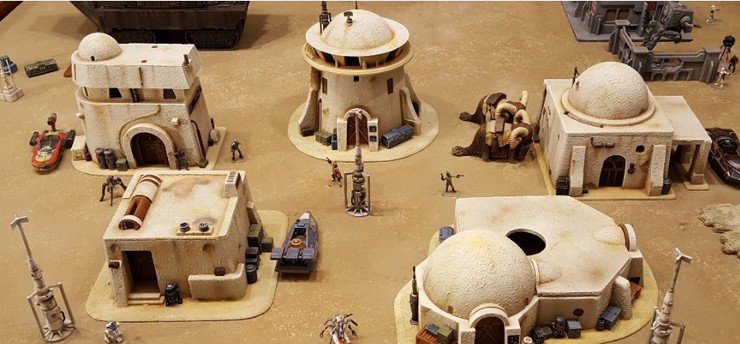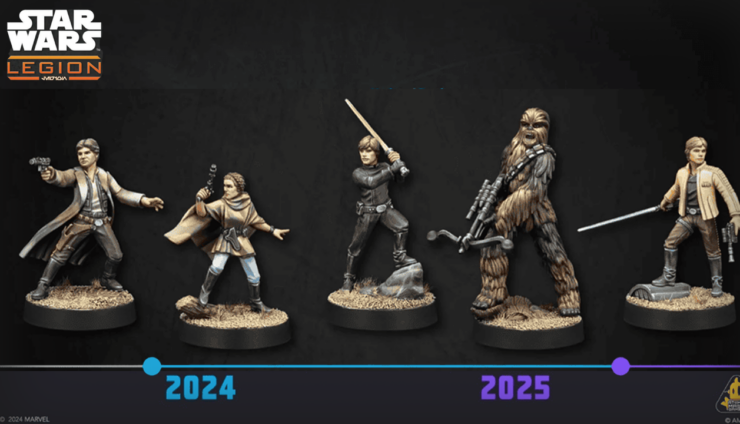What’s the point of playing cards if you’re not playing them right? Take our advice on how to play better at Star Wars Legion by seizing the initiative!
I’ve discussed building an army and selecting battle cards, so now it’s time to look at one of the important decisions you need to make during the battle itself. Specifically, how to play your command cards.
Playing Your Command Cards Right In Star Wars Legion
Command cards determine priority (that is, who goes first), how many units can be issued orders, and can provide special one-time effects. Playing the right card at the right time can give you an important advantage for the ensuing round. But, every time you play a command card (other than Standing Orders) you are restricting your options for future rounds as well.

That’s something to keep in mind as the game progresses.
As each round comes to a close and you prepare to make your final activation(s), you should already be thinking about which of your command cards will be most helpful in the upcoming round. Furthermore, as you consider your options, remember that there are only six rounds in a normal game and you have seven command cards. Some games may be decided well before the sixth round. With this in mind you shouldn’t become preoccupied with waiting for the absolute perfect scenario to play a certain card.
Last/First
While getting the first activation in a round is clearly advantageous during most game rounds, there may be times, especially at the beginning of the game, when you’d rather be able to activate certain units as late in the round as possible. Holding Darth Vader back until after enemy units have activated ensures he can move into the most favorable position possible for the next round. With its unmatched speed, a T-47 Airspeeder is great for flying across the board to get a shot off against a key target– but doing so early in the round can leave you open to substantial return fire from other units that have yet to activate.
In my experience, players often use Standing Orders in the first round for this very reason, waiting to activate one of their best units so they can better react to changes in the board state. In many cases, armies will not be deployed in shooting range of each other, and as soon as one unit moves close enough to hit an enemy, they also expose themselves to return fire.
However, since Standing Orders only allows you to issue orders to one unit, you are leaving the rest of your activation order to chance. If you have more than one unit that you want to hold back to activate at the end of the round, you may be better off opening with a card like Assault that allows you to issue more orders. While you might be sacrificing the very last activation in the round, it may very well be worth it to activate three important units exactly when needed instead of just one.
Getting the last activation in a round is of little consequence if you cannot capitalize on it. When you do go last, you should use it to gain superior positioning for the next round and/or a chance to attack an enemy without reprisal. This tends to be especially effective if you can follow up by activating the same unit first in the following round– going “last/first”. Naturally, a pair of back-to-back activations is most powerful when using a high quality unit that can hit hard.
For example, I mentioned holding an Airspeeder’s activation until the end so it can swoop in from out of range and then take a shot. Doing so likely means that for the entirety of the next round it will be in danger of getting shot down, so it would be prudent to activate it first if possible, allowing it to get another shot in before flying back out of range (or out of sight.)
Another ideal unit to go “last/first” with is Luke Skywalker. Moving him into position and then opening the next round with Son of Skywalker can be absolutely devastating, perhaps getting you three powerful attacks in row without any sort of retaliation. Of course, engineering such a play against a skilled adversary may not be as simple as it sounds.
Command Cards as Counters
As you survey the battlefield at the end of each round, you should try to get an idea of what your opponent will try next. Unique command cards can trigger powerful effects, and sometimes the best way to counter these is with powerful command cards of your own. Even without an extra effect, a well-timed Ambush can be punishing on its own.
Of course, winning priority can go a long way to frustrating enemy plans, giving you a chance to move a key unit somewhere safer and/or try to suppress, damage, or defeat your most threatening enemy. Even a high priority card like Ambush can be stymied if you play your own one pip card against it and get lucky. But if possible, it is always better not to leave such things to chance.
To illustrate how you might be able to counteract powerful enemy command cards, let’s take a look at the above-mentioned Son of Skywalker. If a round ends with Luke in position to attack a juicy target (like your commander), there’s a good chance that this card will be played. Even hardy units like the AT-ST or Darth Vader should be worried in this situation. Here’s an examination of some command cards that can offer some counterplay against Son of Skywalker (and possibly other high priority command cards as well):
 Master of Evil
Master of Evil
You’ll be giving up on going first– and Darth Vader is typically most vulnerable before he’s had a chance to activate– but giving him a dodge token while issuing orders means he doesn’t need to activate first. After playing this card, Vader can blunt at least one of Luke’s attacks by cancelling a hit and converting surges to blocks. Dumping suppression tokens on nearby enemy troopers is icing on the cake, and puts Rebel Corps units at risk of panicking if Luke doesn’t stay close enough.
No Time For Sorrows
You won’t win priority against Son of Skywalker (or any other one pip card) but you still get to move first! A speed-1 move isn’t much, but if Leia or other vulnerable trooper units are just at the edge of Luke’s movement range, a short move may be all you need to spoil his charge. Or alternatively, you might be able to sacrifice a less important corps unit to enter a melee with Luke or otherwise move to block him from charging something more important.
 Whipcord Launcher
Whipcord Launcher
Sorry About the Mess
This post was courtesy of Imperial Terrain. Be sure to check them out for all your 3D printed Terrain needs.














